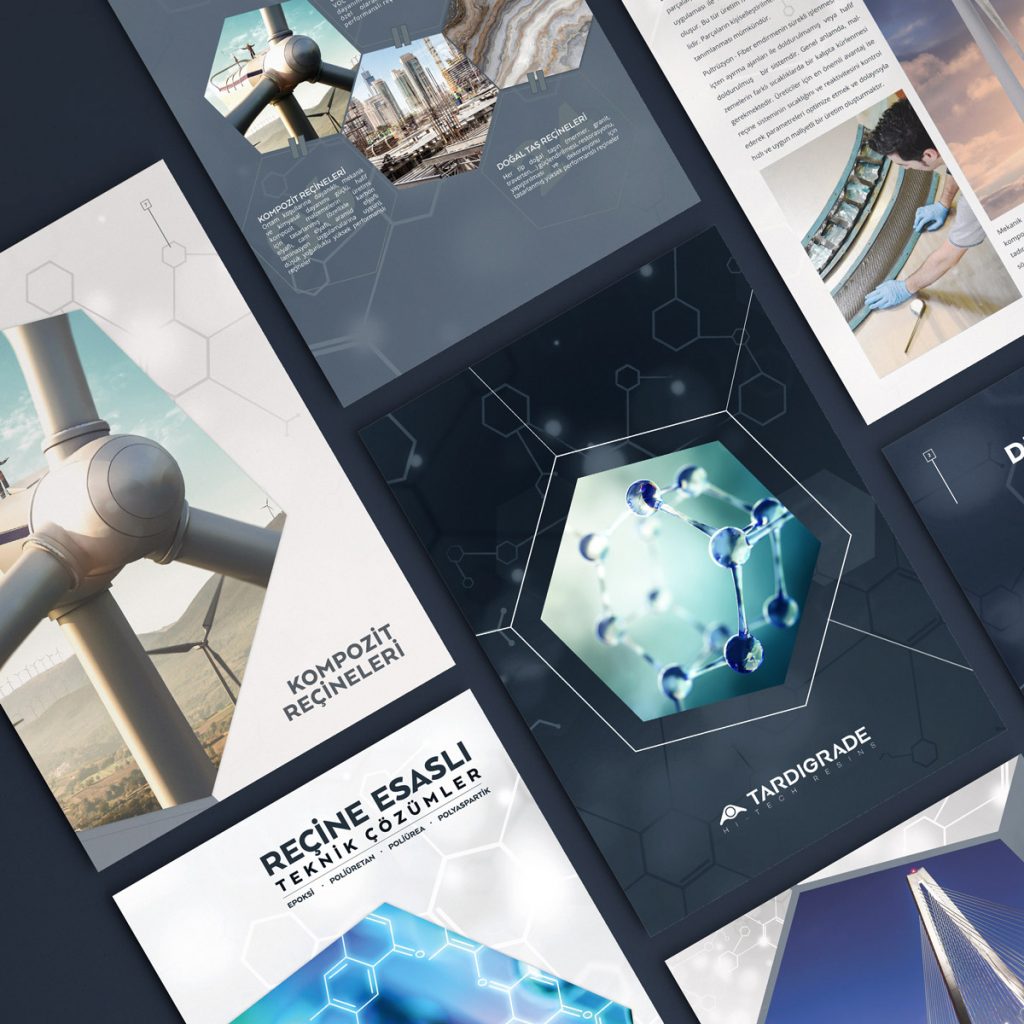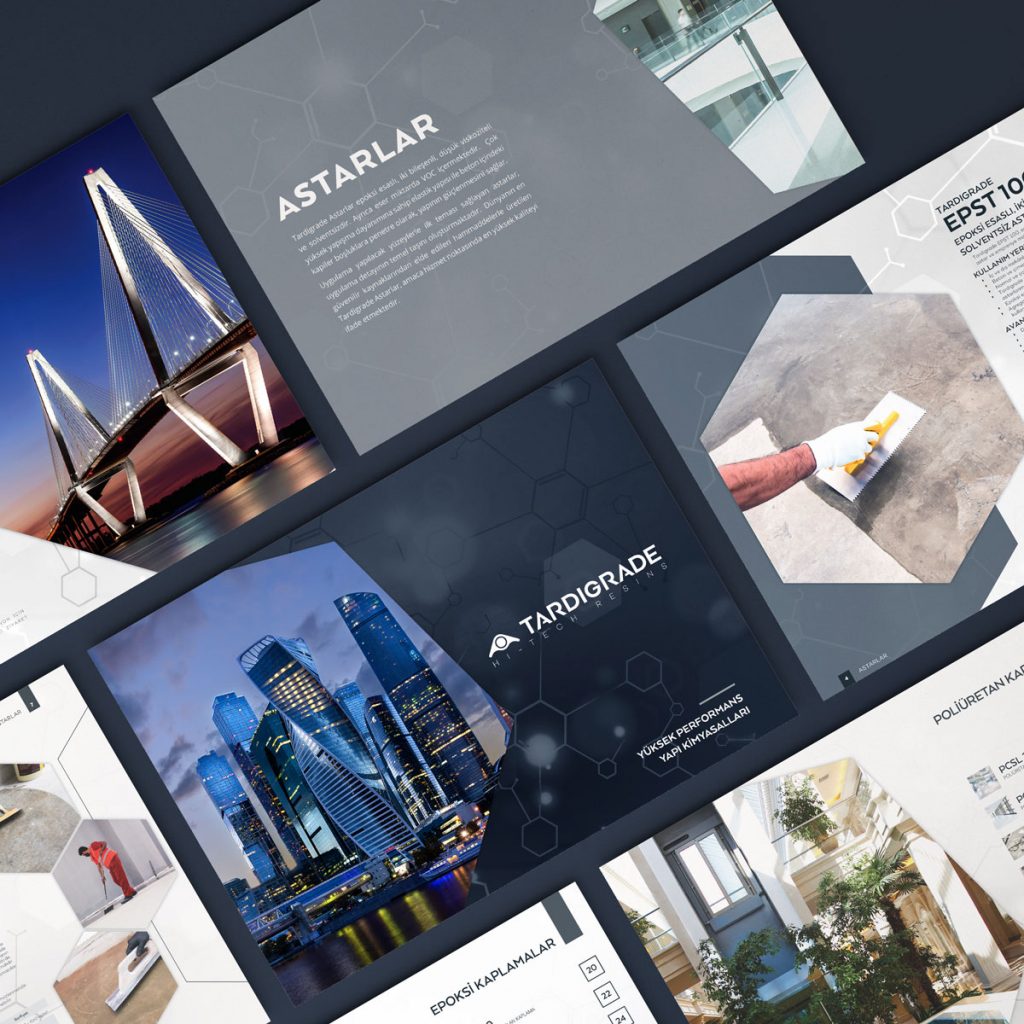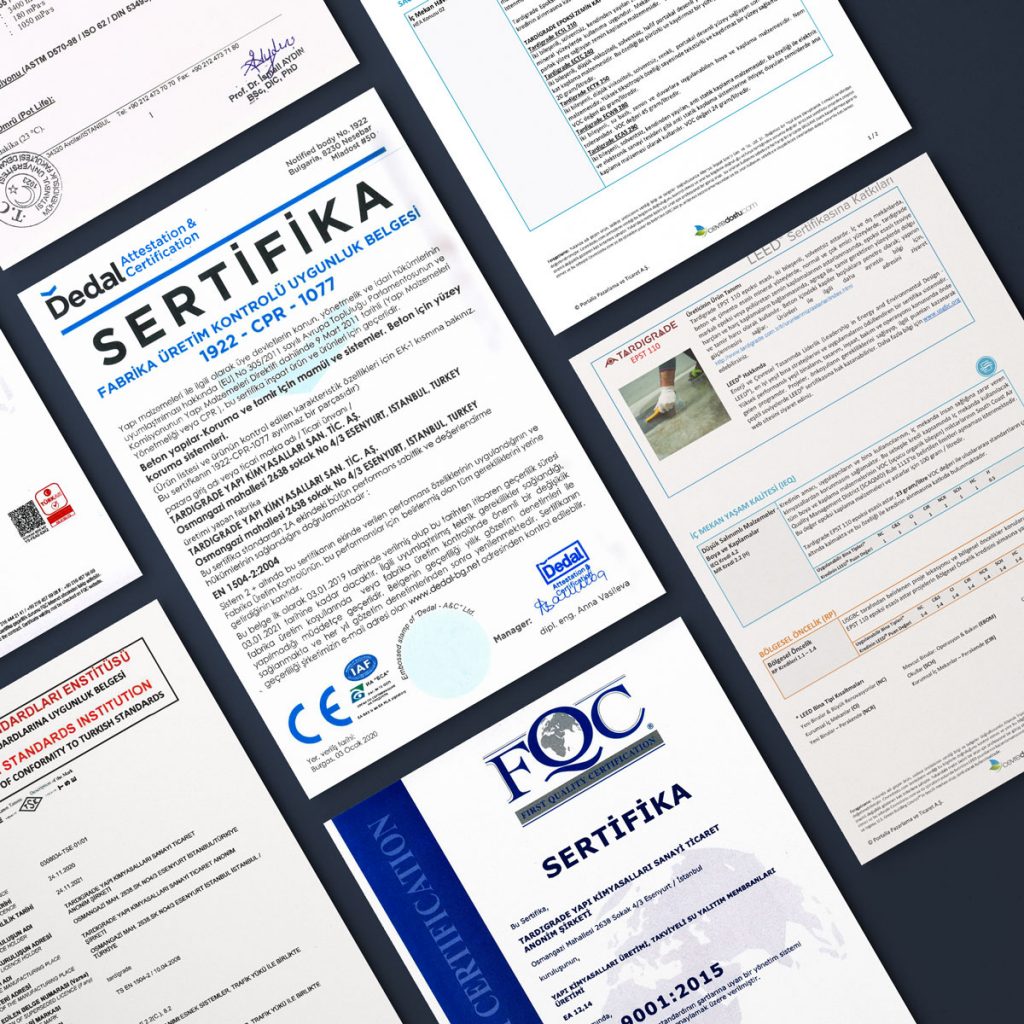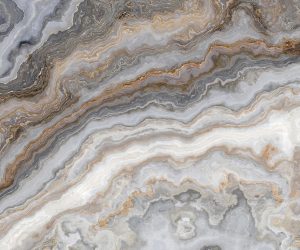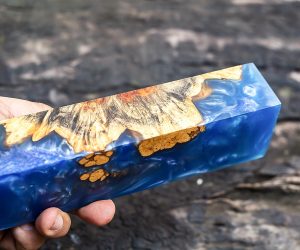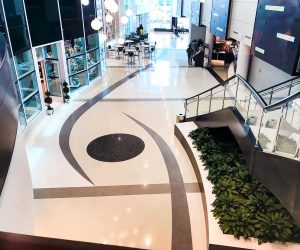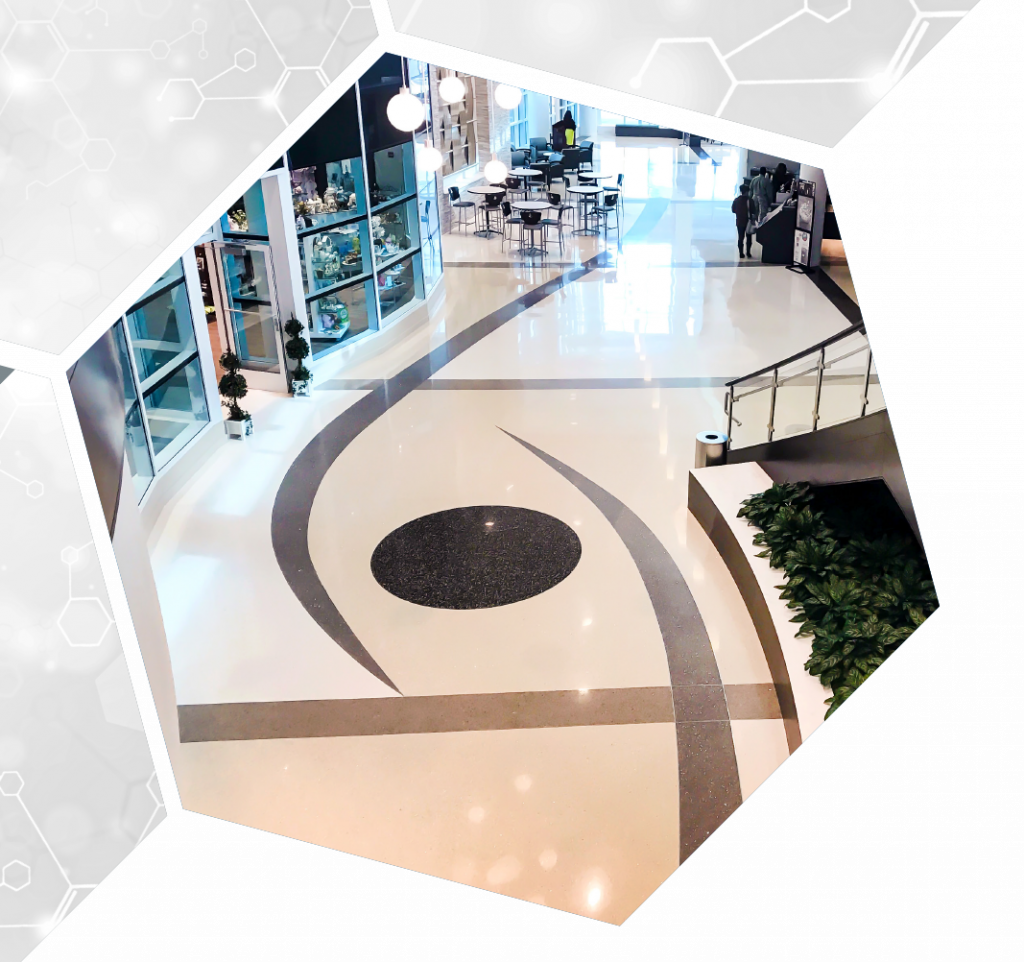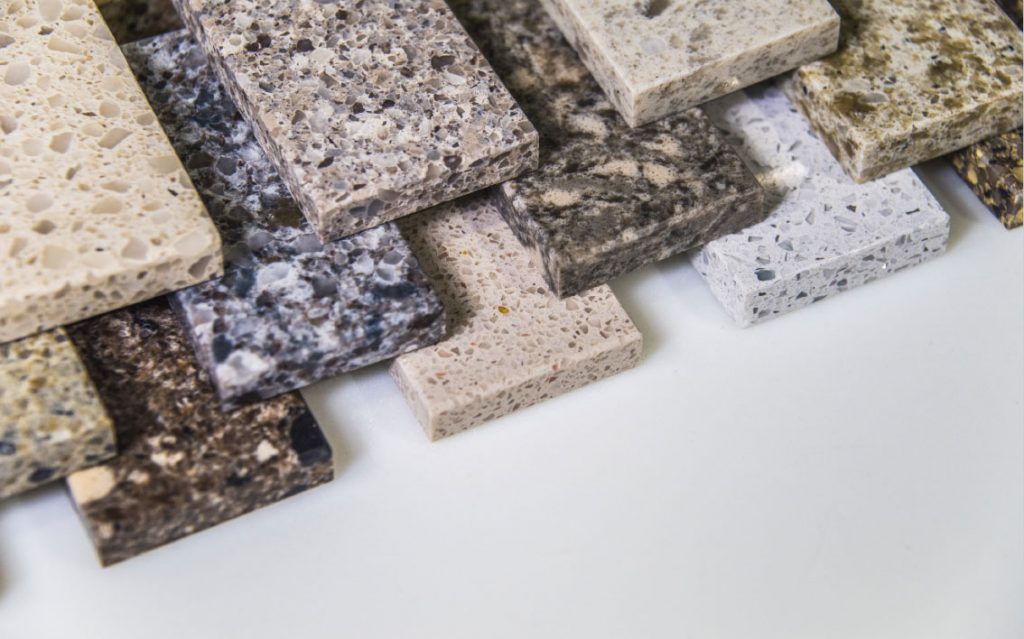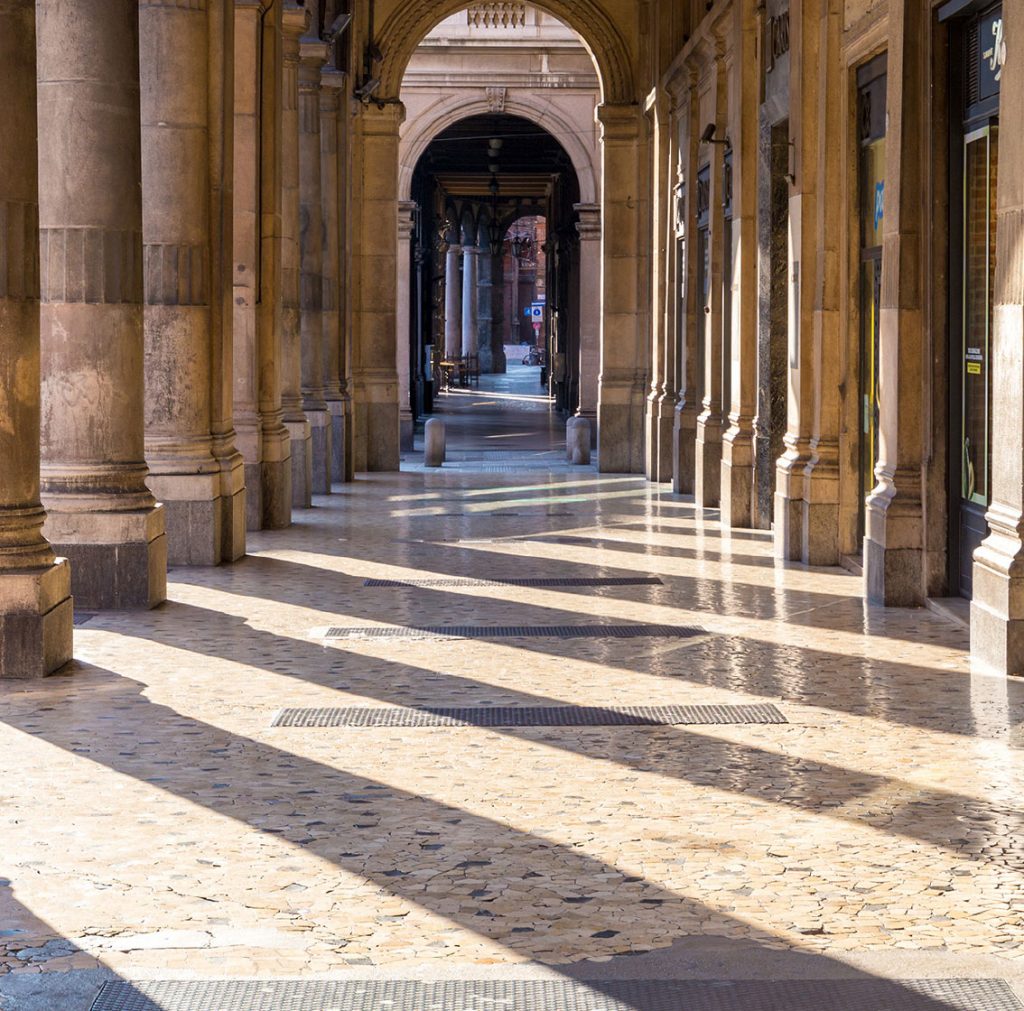ARCHITECTURAL SOLUTIONS
ART IN RESIN
Tardigrade branded products play an integrated role in the international construction sector because of its vast experience in the fields of architecture and engineering construction chemicals. Providing long lasting, high-performing epoxy-based resins, polyurethane resins, polyaspartic resins, special purpose resins and hybrid mixtures.
Tardigrade’s, technological solutions (specialty coatings) are designed and manufactured to provide decorative, protective and hygienic solutions for architectural applications. These applications can be applied on the following surfaces:
- Terrazzo
- Stone Carpet
- Mosaic
TERRAZZO
Terrazzo is a very versatile product and preferred material among architects because of its design flexibility. Manufactured from a combination of resins and natural elements such as stones, glass, mirrors, aggerates, oyster shells and other decorative materials enables unlimited design possibilities for unique, seamless (joint-free) flooring and other surfaces. Divider strips such as metal and/or hard plastics provide design richness, allowing for separation of contrasting colors or simply add geometrical shapes, boarders or other design elements.
Terrazzo composites are generally applied to concrete surfaces and are a combination of resin and aggregates. Although its primary binding resin is epoxy, it can also be designed with lower performance resins in areas subject to lower loads; offering an easy-to-maintain surface that is hygienic, durable and will last the test of time.
The basis of the application process is the strengthening of a smooth floor and the homogeneous laying and placement of the poured Terrazzo mixture. The mixture, which is expected to be fully cured in this state, is applied with abrasives of different properties from low value hardness to high value hardness (classic natural stone surface treatment method) by means of powerful surface treatment machines and abrasive apparatus (diamond-tipped steel, resin-based pad). The process is completed by polishing according to demand and sometimes by glazing with resins of different properties (aliphatic/aromatic polyurethane, transparent polyaspartic, transparent epoxy).
- Airport terminals
- Shopping malls
- Pharmaceutical and chemical plants
- Museums and convention centers
- Exhibition palaces
- Educational institutions and social facilities
- Office and administration buildings
- Hotels and restaurants
- It creates a hygienic environment with its joint and joint-free structure
- Provides aesthetic, decorative and artistic design
- Original designs can be made with metal and composite plastic profiles
- Throughout its life, it has many advantages in maintenance and repair, as it is suitable for etching and polishing
- Highly resistant to thermal changes
- Has high wear resistance
- It can be designed according to different anti-slip requirements
HISTORY OF TERRAZZO
The predecessor of the mosaic-based floor system, which first examples were see in ancient Egyptian mosaics, can be found in Italy. Throughout time, techniques evolved with more modern applications used in Venice during the 15th century. Venetian workers mastered their technique by placing small pieces of marble into a based mortar. Once the stone was set, they would grind and polish the surface, sometimes with goats’ milk, to reveal beautiful designs and patterns. This technique was coined the term Terrazzo, meaning terrace in Italian. Elegant, practical and powerful terrazzo coatings were used throughout the region providing luxurious yet affordable flooring options.
By the end of the 18th century, Italian artisans moved the terrazzo concept from Europe to America where George Washington’s Mount Vernon home was among the first known uses of this technique in the United States. Shortly after, marble and terrazzo application techniques spread throughout the country, becoming a usable and preferred coating for all concepts of American construction.
As of today, terrazzo is a durable building material consisting of many different aggregates with solvent-free epoxy resins. As a composite character, epoxy is used as a smooth textured coating system. Terrazzo offers unlimited flexibility to architects and designers in creating stunning designs. Durable and easy to maintain.
TERRAZZO APPLICATION
Concrete floor surfaces must be prepared prior to the application of the final terrazzo surface. This preparation includes etching (wiping) the floors by rasping to allow for a stronger bond with the terrazzo application. Once rasping has been completed, it is necessary to fill in all the fractures detected in the concrete to strengthen its surface. After the cracks have been treated, with the related surface care product, a solvent-free epoxy primer is applied by laminating with glass fiber. Next, separating profiles are mechanically fixed to the surface, in accordance to architectural instructions, and are overhauled with an epoxy resin and sealed.
After all surface preparations have been completed and the last applied resin-based product has hardened sufficiently, two-component solvent-free terrazzo resins are poured into the mixture. Afterwards, the ready-made aggregate mixture, which has the consistency of mortar, is filled. The mixture should be mixed homogeneously prior to application.
The ready mortar is laid on the surface, prepared by an experienced applications teams through a manual application.
This process involves consistent leveling to ensure an even application, thus preventing surface imperfections and stress fractures.
After the mixture has cured, it is abraded (multi-head grinder is preferred) dryly with diamond-tipped abrasive tools using a suitable surface treatment machine. Then, it is subjected to a more sensitive (wet) surface treatment with a resin based abrasive pads and polished, similar to the process the process used in the treatment of natural stones surfaces. Depending on the service mode or architectural plan of the area to be used, glazing with resins of different properties (aliphatic/aromatic polyurethane, transparent polyaspartic, transparent epoxy) may be used to provide added sheen or protection.
STONE CARPET
Stone carpet floor covering systems are becoming increasingly popular due to their elegant ascetics for home restoration because of their infinite application possibilities. Some of the most popular applications are interior flooring, shower stalls and exterior walkways and paths. However, they are also used for industrial applications, providing hint of dignified opulence for shopping malls, parks and gardens.
- It creates a hygienic environment with its jointless and seamless structure
- It can be applied faster than alternative special coatings
- It has antimicrobial properties according to its binder resin
- It provides aesthetic, decorative and artistic design
- It enables unique designs to be made with metal and composite plastic materials
- It has many advantages in terms of maintenance and repair since it is suitable for grinding and polishing during its lifetime
- It can be designed according to different anti-slip needs
- It is compatible with underfloor heating systems
MOSAIC
Mosaic coatings can vary from smooth, glossy finishes by abrading after pouring, or can be scalloped by utilizing a “troweled mosaic” method. Scalloped mosaics are used especially on wet surfaces, walkways and in decorative landscape designs.
Your design aspirations come alive with Tardigrades sustainable, longer lasting options through their innovative high-performance resin systems.
Advantages of Mosaic Coating Systems:
• It creates a hygienic environment with its jointless and seamless structure
• It provides aesthetic, decorative and artistic design
• It has many advantages in terms of maintenance and repair since it is suitable for grinding and polishing during its lifetime
• It has high abrasion strength
• It can be designed according to different anti-slip needs
• Easy to clean and maintain

